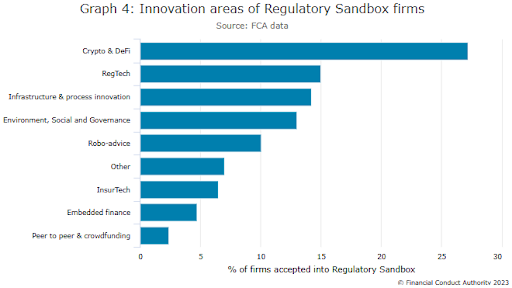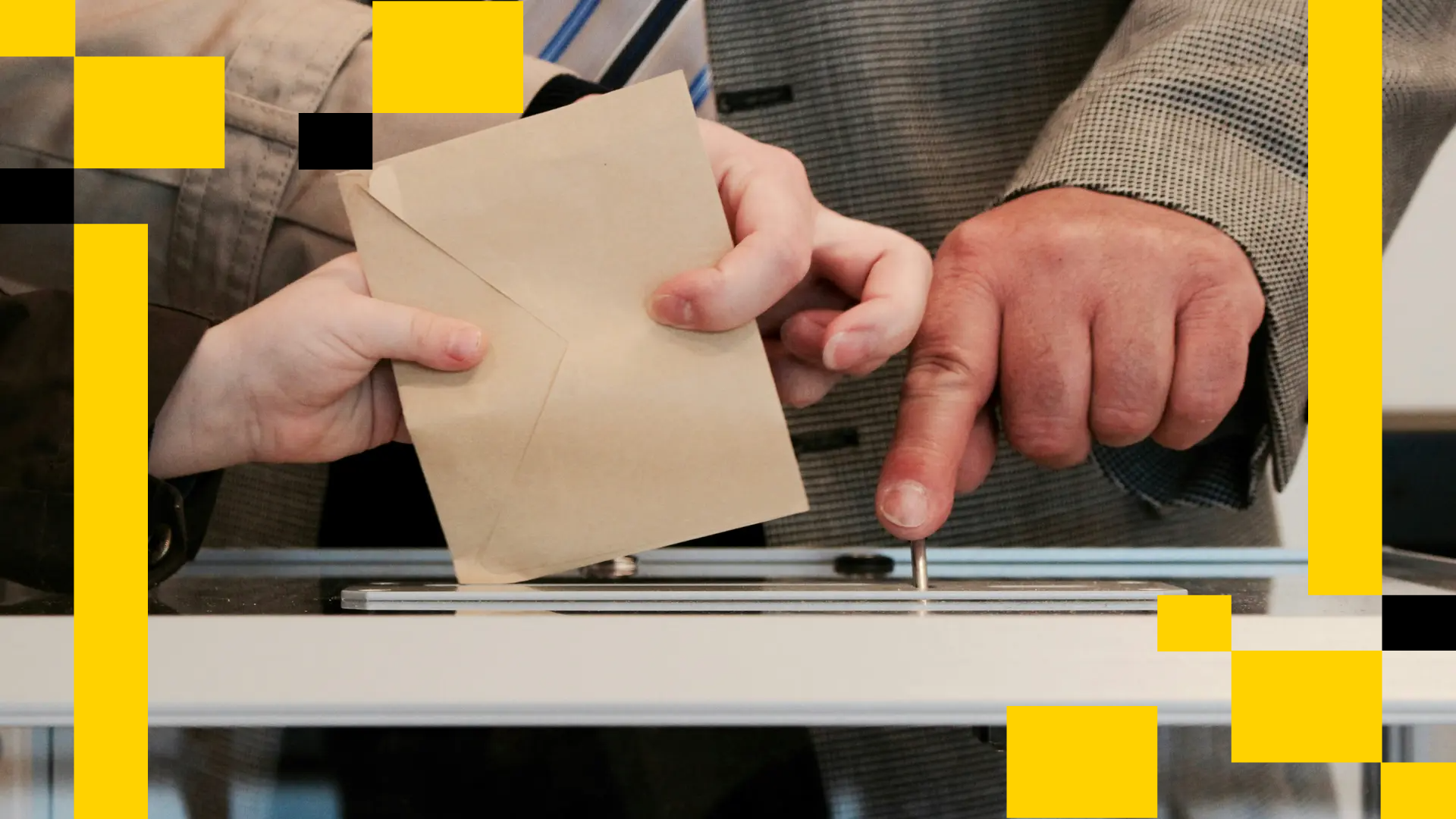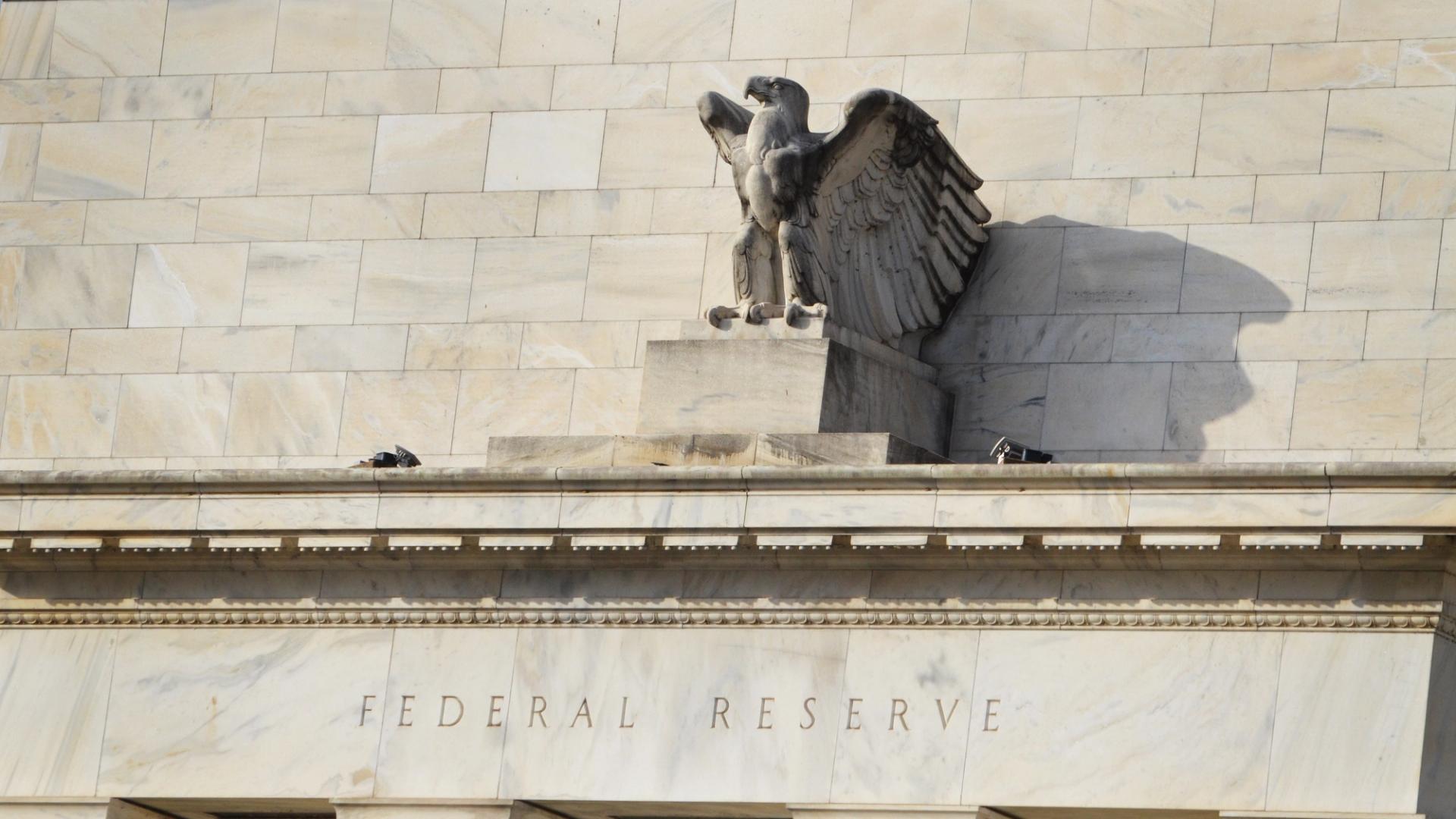Uncategorized
Sandboxes Are a Way Out of the Regulatory Sandstorm

Regulation by enforcement is beginning to crumble, with a court recently ruling that the SEC’s refusal to issue a crypto rule was unlawful. A new crypto-friendly administration stands ready to create crypto clarity through new appointments at the SEC and the CFTC.
New acting CFTC Chair Caroline Pham has proposed an uncommon approach, namely the regulatory sandbox.
A regulatory sandbox is a waiver of regulations but in a supervised environment. Projects can test innovative ideas outside rigid regulatory frameworks. Federal digital asset sandboxes may come sooner than you think, but current state sandbox models fall short in the digital assets context, with extremely limited scopes and durations.
We propose a “Sustainable Sandbox” and develop Pham’s idea, along with similar proposals from SEC Commissioner Peirce, and various initiatives in states and the Federal Reserve.
The Sustainable Sandbox will give regulators enough time and information to draft thoughtful and sensible rules governing digital assets. Without such a stopgap, the digital assets industry would end up in the same place–trying to work with rules that do not make sense.
How sandboxes work
At its core, a regulatory sandbox allows businesses to conduct live experiments with innovative technologies while regulators observe and gather data. Businesses apply for waivers from certain laws that may technically apply to their activities but do not align with the unique nature of their innovations.
For example, a decentralized finance (DeFi) platform might be exempted from securities regulations that were designed for traditional financial intermediaries. This exemption provides the freedom to innovate without being hamstrung by outdated rules.
Importantly, regulatory sandboxes do not equate to a regulatory free-for-all. Participants must adhere to baseline standards for consumer protection and financial stability, ensuring that accountability is not sacrificed in the name of innovation.
In practice, regulatory sandboxes have proven to be valuable tools for identifying outdated regulations. By generating real-world data, they enable lawmakers to assess whether certain rules should be reformed or repealed. Without such mechanisms, unnecessary or impractical regulations risk stifling progress and innovation.
Lessons from the U.K. and beyond
The U.K. has been a pioneer in implementing regulatory sandboxes. The Financial Conduct Authority (FCA) introduced its sandbox in 2016, offering a structured environment for businesses to test new ideas. Participants have ranged from large law firms to cryptocurrency projects, reflecting the sandbox’s inclusivity and flexibility.
In terms of digital assets innovation, the U.K.’s success can be attributed to its focus on fostering both collaboration and innovation. By allowing businesses to experiment within a regulated framework, the sandbox has attracted a diverse array of participants and provided critical insights into how emerging technologies interact with existing laws.

Other regions, such as Singapore and the UAE, have also embraced sandboxes as tools for driving innovation. Singapore’s Monetary Authority (MAS) has used its sandbox to advance tokenization in financial services, while the UAE has leveraged its framework to attract blockchain startups. These examples highlight the potential of sandboxes to position countries as global leaders in the digital asset space.
Challenges facing regulatory sandboxes
Despite their benefits, the existing regulatory sandboxes face several limitations:
Narrow scope: Most sandboxes are restricted to specific industries or activities, limiting their applicability to broader regulatory challenges. Participants must also apply and be accepted, so not all projects are treated equally.
Short duration: Sandboxes often have fixed timelines, requiring businesses to exit the program without long-term regulatory clarity.
High costs: Participating in a sandbox can be resource-intensive for both businesses and regulators, deterring smaller players from applying.
To address these challenges, we propose the «Sustainable Sandbox» – a redesigned framework tailored to the unique needs of the crypto industry.
Designing the ‘sustainable sandbox’
The «Sustainable Sandbox» builds on the strengths of existing models while addressing their shortcomings. Here’s how it would work:
1. Simplified automatic enrollment
Participants that complete a form filing process will be automatically enrolled, and will not be subject to an application and acceptance process by the regulator. Businesses that don’t fit the default form, such as DAOs or decentralized exchanges, could propose their own compliance frameworks (subject to regulatory approval) aligned with broad policy goals set by regulators.
2. Data-driven decision-making
Regulators would collect and analyze data from sandbox participants to evaluate the effectiveness of waived regulations. This information could inform broader reforms, creating a feedback loop that aligns regulation with innovation, and enabling regulators to write new sensible rules.
3. Seamless transitions
At the end of the sandbox period, participants could transition to a tailored safe harbor (which SEC Commissioner Hester Peirce has long envisioned) or receive no-action letters (but remain subject to light oversight), providing long-term regulatory clarity. This ensures that businesses do not face a regulatory cliff, which could disrupt operations and deter participation.
Why now?
The need for a «Sustainable Sandbox» in the U.S. has never been greater. Innovative industries like blockchain and AI are evolving rapidly, but outdated legal frameworks threaten to stifle their potential. At the same time, many regulators lack a deep understanding of these technologies, making it difficult to craft effective rules. By setting broad policy goals and collaborating with industry stakeholders, regulators can bridge this knowledge gap and create a more adaptive legal framework.
The recent Supreme Court decision in Loper Bright Enterprises v. Raimondo further underscores the urgency of regulatory innovation. By removing courts’ deference to agency interpretations of their authority, the ruling shifts power toward regulated industries, emphasizing the need for more collaborative governance. The «Sustainable Sandbox» offers a path forward, balancing the needs of regulators and innovators in a rapidly changing landscape.
Final thoughts
As the crypto industry continues to grow, so does the need for regulatory frameworks that can keep pace with innovation. The «Sustainable Sandbox» provides a blueprint for balancing experimentation with accountability, fostering a collaborative environment where both regulators and businesses can thrive. By embracing this model, the U.S. has an opportunity to lead the world in crypto innovation while ensuring consumer protection and market stability.
For the full version of this article, click here.
Uncategorized
Asia Morning Briefing: Native Markets Wins Right to Issue USDH After Validator Vote

Good Morning, Asia. Here’s what’s making news in the markets:
Welcome to Asia Morning Briefing, a daily summary of top stories during U.S. hours and an overview of market moves and analysis. For a detailed overview of U.S. markets, see CoinDesk’s Crypto Daybook Americas.
Hyperliquid’s validator community has chosen Native Markets to issue USDH, ending a weeklong contest that drew proposals from Paxos, Frax, Sky (ex-MakerDAO), Agora, and others.
Native Markets, co-founded by former Uniswap Labs president MC Lader, researcher Anish Agnihotri, and early Hyperliquid backer Max Fiege, said it will begin rolling out USDH “within days,” according to a post by Fiege on X.
According to onchain trackers, Native Markets’ proposal took approximately 70% of validators’ votes, while Paxos took 20%, and Ethena came in at 3.2%.
The staged launch starts with capped mints and redemptions, followed by a USDH/USDC spot pair before caps are lifted.
USDH is designed to challenge Circle’s USDC, which currently dominates Hyperliquid with nearly $6 billion in deposits, or about 7.5% of its supply. USDC and other stablecoins will remain supported if they meet liquidity and HYPE staking requirements.
Most rival bidders had promised to channel stablecoin yields back to the ecosystem with Paxos via HYPE buybacks, Frax through direct user yield, and Sky with a 4.85% savings rate plus a $25 million “Genesis Star” project.
Native Markets’ pitch instead stressed credibility, trading experience, and validator alignment.
Market Movement
BTC: BTC has recently reclaimed the $115,000 level, helped by inflows into ETFs, easing U.S. inflation data, and growing expectations for interest rate cuts. Also, technical momentum is picking up, though resistance sits around $116,000, according to CoinDesk’s market insights bot.
ETH: ETH is trading above $4600. The price is being buoyed by strong ETF inflows.
Gold: Gold continues to trade near record highs as traders eye dollar weakness on expected Fed rate cuts.
Elsewhere in Crypto:
Uncategorized
BitMEX Co-Founder Arthur Hayes Sees Money Printing Extending Crypto Cycle Well Into 2026

Arthur Hayes believes the current crypto bull market has further to run, supported by global monetary trends he sees as only in their early stages.
Speaking in a recent interview with Kyle Chassé, a longtime bitcoin and Web3 entrepreneur, the BitMEX co-founder and current Maelstrom CIO argued that governments around the world are far from finished with aggressive monetary expansion.
He pointed to U.S. politics in particular, saying that President Donald Trump’s second term has not yet fully unleashed the spending programs that could arrive from mid-2026 onward. Hayes suggested that if expectations for money printing become extreme, he may consider taking partial profits, but for now he sees investors underestimating the scale of liquidity that could flow into equities and crypto.
Hayes tied his outlook to broader geopolitical shifts, including what he described as the erosion of a unipolar world order. In his view, such periods of instability tend to push policymakers toward fiscal stimulus and central bank easing as tools to keep citizens and markets calm.
He also raised the possibility of strains within Europe — even hinting that a French default could destabilize the euro — as another factor likely to accelerate global printing presses. While he acknowledged these policies eventually risk ending badly, he argued that the blow-off top of the cycle is still ahead.
Turning to bitcoin, Hayes pushed back on concerns that the asset has stalled after reaching a record $124,000 in mid-August.
He contrasted its performance with other asset classes, noting that while U.S. stocks are higher in dollar terms, they have not fully recovered relative to gold since the 2008 financial crisis. Hayes pointed out that real estate also lags when measured against gold, and only a handful of U.S. technology giants have consistently outperformed.
When measured against bitcoin, however, he believes all traditional benchmarks appear weak.
Hayes’ message was that bitcoin’s dominance becomes even clearer once assets are viewed through the lens of currency debasement.
For those frustrated that bitcoin is not posting fresh highs every week, Hayes suggested that expectations are misplaced.
In his telling, investors from the traditional world and those in crypto actually share the same premise: governments and central banks will print money whenever growth falters. Hayes says traditional finance tends to express this view by buying bonds on leverage, while crypto investors hold bitcoin as the “faster horse.”
His conclusion is that patience is essential. Hayes argued that the real edge of holding bitcoin comes from years of compounding outperformance rather than short-term speculation.
Coupled with what he sees as an inevitable wave of money creation through the rest of the decade, he believes the present crypto cycle could stretch well into 2026, far from exhausted.
Uncategorized
Bitcoin Bulls Bet on Fed Rate Cuts To Drive Bond Yields Lower, But There’s a Catch

On Sept. 17, the U.S. Federal Reserve (Fed) is widely expected to cut interest rates by 25 basis points, lowering the benchmark range to 4.00%-4.25%. This move will likely be followed by more easing in the coming months, taking the rates down to around 3% within the next 12 months. The fed funds futures market is discounting a drop in the fed funds rate to less than 3% by the end of 2026.
Bitcoin (BTC) bulls are optimistic that the anticipated easing will push Treasury yields sharply lower, thereby encouraging increased risk-taking across both the economy and financial markets. However, the dynamics are more complex and could lead to outcomes that differ significantly from what is anticipated.
While the expected Fed rate cuts could weigh on the two-year Treasury yield, those at the long end of the curve may remain elevated due to fiscal concerns and sticky inflation.
Debt supply
The U.S. government is expected to increase the issuance of Treasury bills (short-term instruments) and eventually longer-duration Treasury notes to finance the Trump administration’s recently approved package of extended tax cuts and increased defense spending. According to the Congressional Budget Office, these policies are likely to add over $2.4 trillion to primary deficits over ten years, while Increasing debt by nearly $3 trillion, or roughly $5 trillion if made permanent.
The increased supply of debt will likely weigh on bond prices and lift yields. (bond prices and yields move in the opposite direction).
«The U.S. Treasury’s eventual move to issue more notes and bonds will pressure longer-term yields higher,» analysts at T. Rowe Price, a global investment management firm, said in a recent report.
Fiscal concerns have already permeated the longer-duration Treasury notes, where investors are demanding higher yields to lend money to the government for 10 years or more, known as the term premium.
The ongoing steepening of the yield curve – which is reflected in the widening spread between 10- and 2-year yields, as well as 30- and 5-year yields and driven primarily by the relative resilience of long-term rates – also signals increasing concerns about fiscal policy.
Kathy Jones, managing director and chief income strategist at the Schwab Center for Financial Research, voiced a similar opinion this month, noting that «investors are demanding a higher yield for long-term Treasuries to compensate for the risk of inflation and/or depreciation of the dollar as a consequence of high debt levels.»
These concerns could keep long-term bond yields from falling much, Jones added.
Stubborn inflation
Since the Fed began cutting rates last September, the U.S. labor market has shown signs of significant weakening, bolstering expectations for a quicker pace of Fed rate cuts and a decline in Treasury yields. However, inflation has recently edged higher, complicating that outlook.
When the Fed cut rates in September last year, the year-on-year inflation rate was 2.4%. Last month, it stood at 2.9%, the highest since January’s 3% reading. In other words, inflation has regained momentum, weakening the case for faster Fed rate cuts and a drop in Treasury yields.
Easing priced in?
Yields have already come under pressure, likely reflecting the market’s anticipation of Federal Reserve rate cuts.
The 10-year yield slipped to 4% last week, hitting the lowest since April 8, according to data source TradingView. The benchmark yield has dropped over 60 basis points from its May high of 4.62%.
According to Padhraic Garvey, CFA, regional head of research, Americas at ING, the drop to 4% is likely an overshoot to the downside.
«We can see the 10yr Treasury yield targeting still lower as an attack on 4% is successful. But that’s likely an overshoot to the downside. Higher inflation prints in the coming months will likely cause long-end yields some issues, requiring a significant adjustment,» Garvey said in a note to clients last week.
Perhaps rate cuts have been priced in, and yields could bounce back hard following the Sept. 17 move, in a repeat of the 2024 pattern. The dollar index suggests the same, as noted early this week.
Lesson from 2024
The 10-year yield fell by over 100 basis points to 3.60% in roughly five months leading up to the September 2024 rate cut.
The central bank delivered additional rate cuts in November and December. Yet, the 10-year yield bottomed out with the September move and rose to 4.57% by year-end, eventually reaching a high of 4.80% in January of this year.
According to ING, the upswing in yields following the easing was driven by economic resilience, sticky inflation, and fiscal concerns.
As of today, while the economy has weakened, inflation and fiscal concerns have worsened as discussed earlier, which means the 2024 pattern could repeat itself.
What it means for BTC?
While BTC rallied from $70,000 to over $100,000 between October and December 2024 despite rising long-term yields, this surge was primarily fueled by optimism around pro-crypto regulatory policies under President Trump and growing corporate adoption of BTC and other tokens.
However, these supporting narratives have significantly weakened looking back a year later. Consequently, the possibility of a potential hardening of yields in the coming months weighing over bitcoin cannot be dismissed.
Read: Here Are the 3 Things That Could Spoil Bitcoin’s Rally Towards $120K
-

 Business11 месяцев ago
Business11 месяцев ago3 Ways to make your business presentation more relatable
-

 Fashion11 месяцев ago
Fashion11 месяцев agoAccording to Dior Couture, this taboo fashion accessory is back
-

 Entertainment11 месяцев ago
Entertainment11 месяцев ago10 Artists who retired from music and made a comeback
-

 Entertainment11 месяцев ago
Entertainment11 месяцев ago\’Better Call Saul\’ has been renewed for a fourth season
-

 Entertainment11 месяцев ago
Entertainment11 месяцев agoNew Season 8 Walking Dead trailer flashes forward in time
-

 Business11 месяцев ago
Business11 месяцев ago15 Habits that could be hurting your business relationships
-

 Entertainment11 месяцев ago
Entertainment11 месяцев agoMeet Superman\’s grandfather in new trailer for Krypton
-

 Entertainment11 месяцев ago
Entertainment11 месяцев agoDisney\’s live-action Aladdin finally finds its stars





